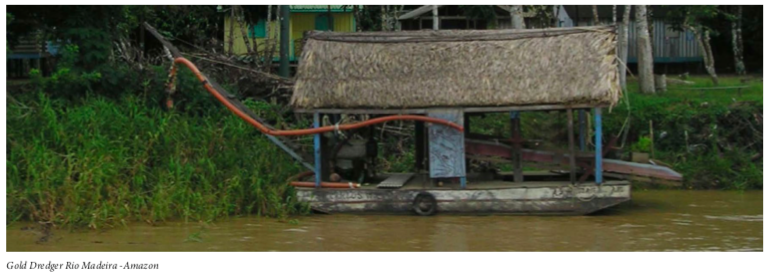

Summary
When considering landscape, waters are frequently neglected or conceived as homogenous space. Whilst the liminal spaces between land and water are viewed as critical points for life, the waters are perceived
as voids. Within Western perception the sea is a void to explore, a gateway for heroic travel. Within the Sub continental psyche the fertile rivers are the source of life (nodi matrik). In each case the waters are perceived as a mysterious void. This workshop questions whether, in addition to being a source of life and gateway for exploration, the waters are inhabited space.
If territory is the space of the land, maritory (Escuela de Arquitectura , Universidad Católica de Valparaíso,1971), is the space of the seas. In this context the broad interpretation includes not only oceans and seas but also rivers, inland waterways and channels. Can we challenge our perception of maritorial space to include the multiplicities and differences with which we perceive land?
Archipelagic Thinking proposes perception of the world as a series of small interconnected and interde- pendent masses, adapted by the exchange that occurs between them(Glissant, 1989). Whilst continental thinking works with large masses to introvert and homogenize, archipelagic thinking resists the homog- enizing forces in favour of mixing and multiplicity. Applied not only to land masses but to waters them- selves this perception has the potential to reveal the diversity and interconnectedness of maritorial space. If we propose that the waters are inhabited space, how does that impact on the design of vessels that occu- py them? Do fluvial vessels have a sense of place?
According to Aristotle,
“place was a vessel, a container. Or, rather, to be in a place was to be contained. Yet, while a vessel can be moved, place cannot…..the layer of water surrounding the boat is continually changing, it may contain but it cannot be a place. Thus it must be “the whole river” that is a place ie the banks and the beds of the river.” (Casey,1998)
He highlights the placeness of liminal spaces but negates boats and vessels of any sense of place. If there
is no place, can there be an architectural imagination for such moveable space? Or is the vessel a tool to explore the space of the sea? Vessels are an interface, between people, land, maritory. Therefore, are vessels of place – to be viewed to be looked at as things that are revealing of the places they are from, occupy and reach or do they themselves have place?
Intentions
“Rivers…… are also good to think with” (Phelan, 2007)

-To imbue our perception of seas, oceans and rivers with fluidity and flux to establish a framework for thinking with the waters
-To introduce and apply concepts of Maritory and Archipelagic thinking as challenges to our perceptions of the relationships between landscape and seascape
-To question the binary perception of land/water to stimulate creative imagination as to how to inhabit space in fragile geographies
-To explore, through detailed examples, how floating vessels reveal the nature and identity of place
-To design prototypes for a floating workshop for the Bengal Delta that are capable of expanding physical, intellectual and creative exploration of the Maritory
Format and Examples
Introduction of four examples through their own maritory: Embarcación Amereida (Chile), Floating Workshop(Chile), Puppet Theatre Barge(UK), La peniche Louise-Catherine(France)
Explaination of the relationships between these vessels and their maritories
Application of concepts (Martiory/Archipelagic Thinking) to understanding and responding to the Bengal Delta
Application of principles of maritime and naval design to understanding and responding to the Bengal Delta
Intensive experimentation arrive at prototypes to explore the space of the Delta

Learning Outcomes
Understanding concepts of maritory and archipelagic thinking
Understanding basic principles of vessel design in relation to specific maritories
Synthetic understanding of the relationship between vessel design and architecture, poetics and the techni- calities of inhabiting the space of the seas
Improved intellectual and creative capacities to understand and respond to the Deltaic condition Improved skills in Design thinking and making
Production of various prototypes to explore the maritory of the Bengal Delta
Development of one-three prototypes that are tested as vessels and as pieces of architecture
Program
Week 1 -Exploring fundamentals and ideas of inhabiting maritorial space
DAY 1: Introduction, reading of selected text and discussion – archipelagic thinking as a key concept in thought and practice
DAY 2: Exploring means of connecting a fragmented geography – infrastructure as interface
DAY 3: A floating infrastructure – a navigable workshop –programmatic constraints in conceptualising life in a fluvial environment
DAY 4: How to expand human inhabitation and making in a fragile yet fertile environment – the case of the Amazon river basin
Week 2– Testing vessels and final presentation
DAY 5: Prototyping a floating workshop –programmatic development and modeling DAY 6: Spatial modeling and constraints
DAY 7: Testing-functional distribution of designed vessel and architectural response DAY 8: Final Presentation – discussion

Selected Reading
Casey, E.S. (1998) The Fate of Place: A Philosophical History. Berkeley: University of California Press.
Escuela de Arquitectura , Universidad Católica de Valparaíso(1971), Maritorios de los Archipiélagos de la Patagonia Occidental. Valparaíso: Escuela de Arquitectura ucv.
Glissant, É.
———. (1989) Caribbean Discourse: Selected Essays. Trans. J. Michael Dash. Charlottesville: UP of Virginia.
———. (1997) The Poetics of Relation, trans Betsy Wing (Ann Harbor: University of Michigan Press.
Ivelic, B.K. (2005), Embarcación Amereida y la epica de fundar el mar patagonico. Valparaiso: Ediciones Universitarias. Phelan, J. (2007) Seascapes: tides of thought and being in Western perceptions of the sea, GARP 14, London: Gold- smiths College, University of London.
Reyes, J.(2012), La condición humana y el mar Valpariaso: Escuela de Arquitectura ucv.
Walcott, D. (1984) The Sea Is History, from Collected Poems,1948-1984. London: Faber.